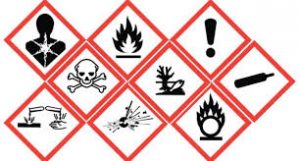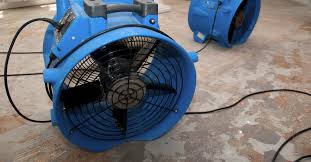 August 2020
August 2020
Fire, leaking windows and burst pipes all require an immediate response by emergency responders, contractors or restoration services. When this time comes knowing what materials go into your building, particularly hazardous materials, is crucial. Even personal renovation projects and basic repairs can go badly when surprises crop up.
Any project or emergency repair can be put on hold or delayed when surprises are encountered including discovery of hazardous material. Contractors, condo management and directors walking through an area can be unintentionally exposed to dangerous materials. Work can be delayed while an area is surveyed to identify its construction materials. Specialized contractors or procedures may be required to work with materials located in the work area. Areas of the building remain inaccessible for longer than anticipated, at times creating additional hazards, while an area is surveyed, materials tested and reports gathered.
Projects take longer to complete and cost more.
Surprises arise from not being aware of materials used in the construction of a building. Older buildings may contain more commonly known materials such as asbestos and lead. Newer buildings may contain less known dangers that include ozone-depleting substances and silica. Mercury may be contained in equipment within the building. Mould can appear anywhere building materials have been damaged by water.
Prior to any renovation program a Designated Substance Survey (DSS) should be undertaken. Its purpose is to identify the presence of hazardous substances on a property or work area. These are materials which can be encountered during a renovation, restoration or construction project. Materials in a construction area will help determine necessary expertise, procedures and equipment. Cost and timing estimates will be more reliable when materials in the construction area are known.
Completing a Designated Substance Survey for an entire condo building in advance of need can be advantageous. It can be provided to contractors or emergency responders when needed. Renovation projects can be better priced and timed with this information. Building residents can access it rather than having a DSS prepared each time it is required. When an emergency occurs providing this document can prevent delays in starting work or halting work in process. Delays become inevitable when material samples need to be collected and sent for analysis then waiting to receive a report.
What happens during a Designated Substance Survey
- Inspection of all common rooms of the building
- Inspection of about 10 percent of residential units
- Collection of materials from building surfaces for analysis to identify asbestos
- Collection of paint samples for analysis to identify lead
- Inspection of ceiling and wall hatches to identify presence or absence of designated substances behind visible surfaces
- Review of mechanical equipment for the presence or absence of designated substances
Designated Substance Survey Report
Once the survey is complete a report is provided. It should identify and provide recommendations for handling hazardous materials including asbestos sealants and caulking, asbestos within drywall compounds or plaster, silica in concrete or other masonry materials, lead in paint, ozone depleting substances in refrigeration systems, surface mould and water damage. The report should include recommendations on how to appropriately handle these materials that can be followed by emergency responders and contractors.
The Designated Substance Survey Report is a tool for use by any contractor responding to an emergency including fire or water damage. It should be provided to a contractor prior to commencing a renovation project, and to those responsible for regular building maintenance. Building management should be familiar with details of the report.
Section 30 of the Occupational Health and Safety Act requires the owner of a building to identify the presence of designated substances within the building. A list of these substances must be provided to the contractor prior to the start of a renovation. Existence of certain substances may require certain procedures to be followed. If this information is not provided to the contractor or deemed incomplete, the building owner can be held liable for damages incurred by the contractor as a result of discovery or exposure to designated substances.







